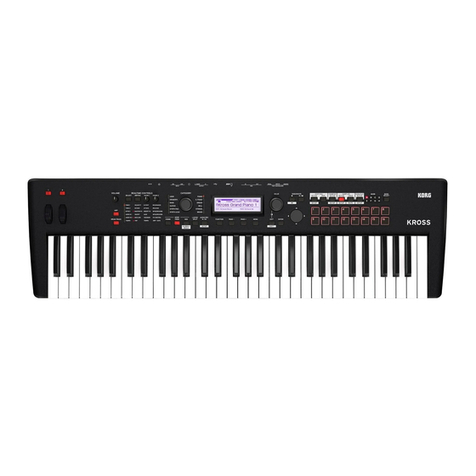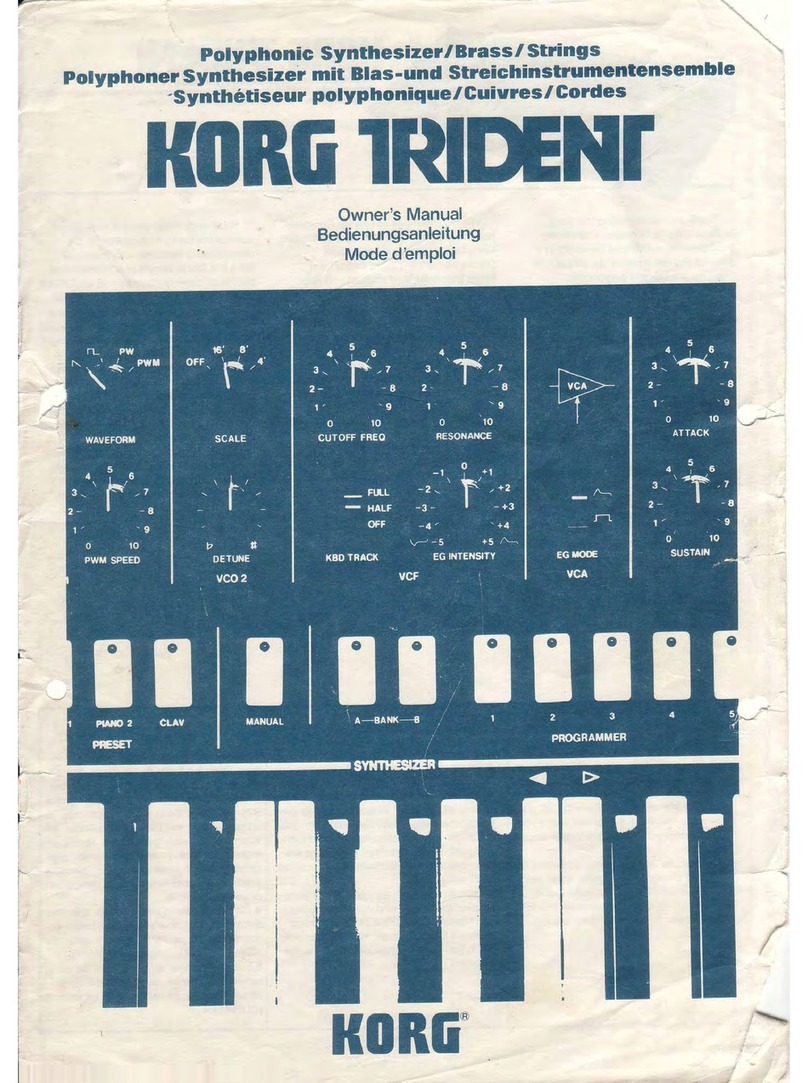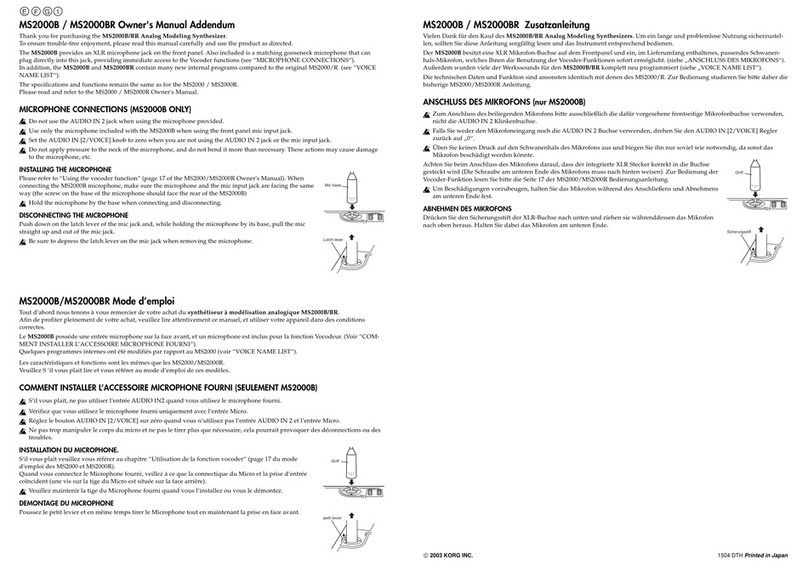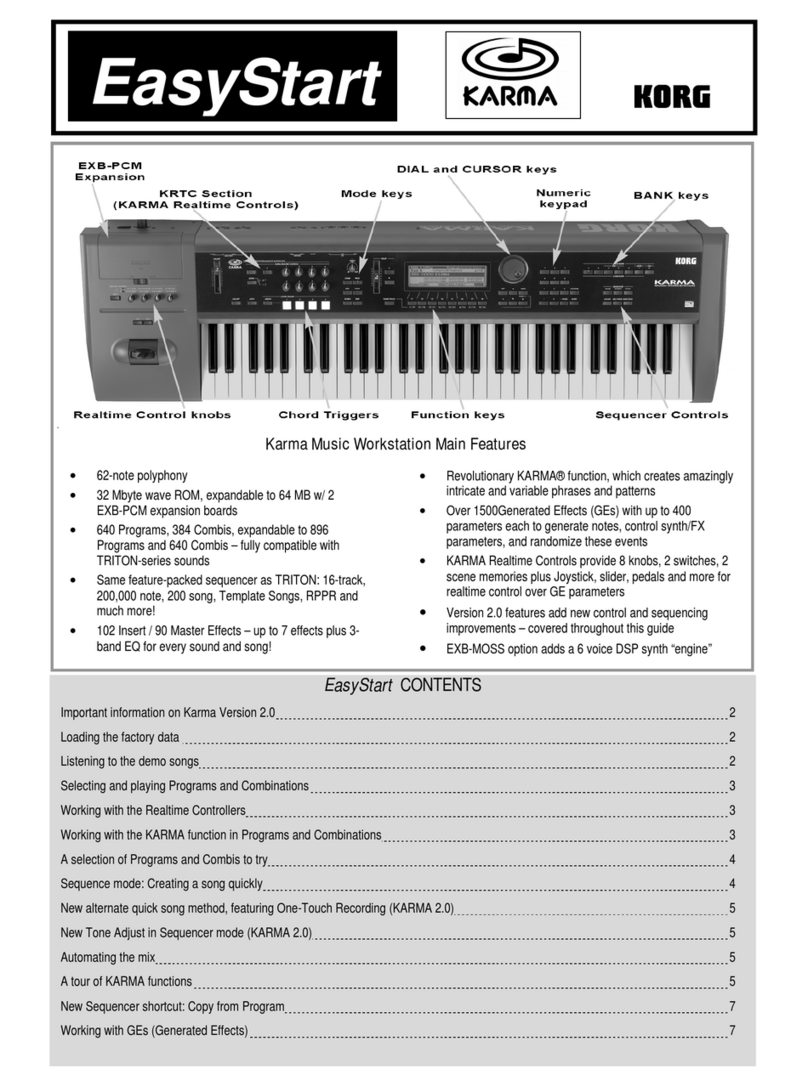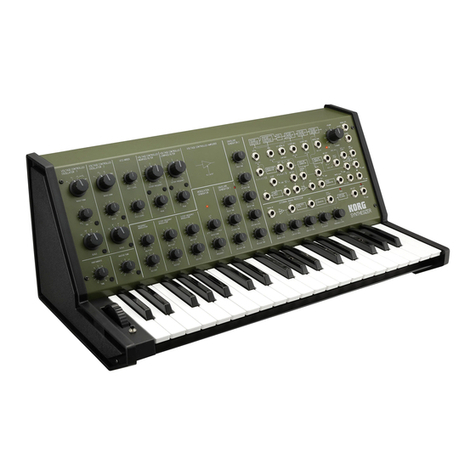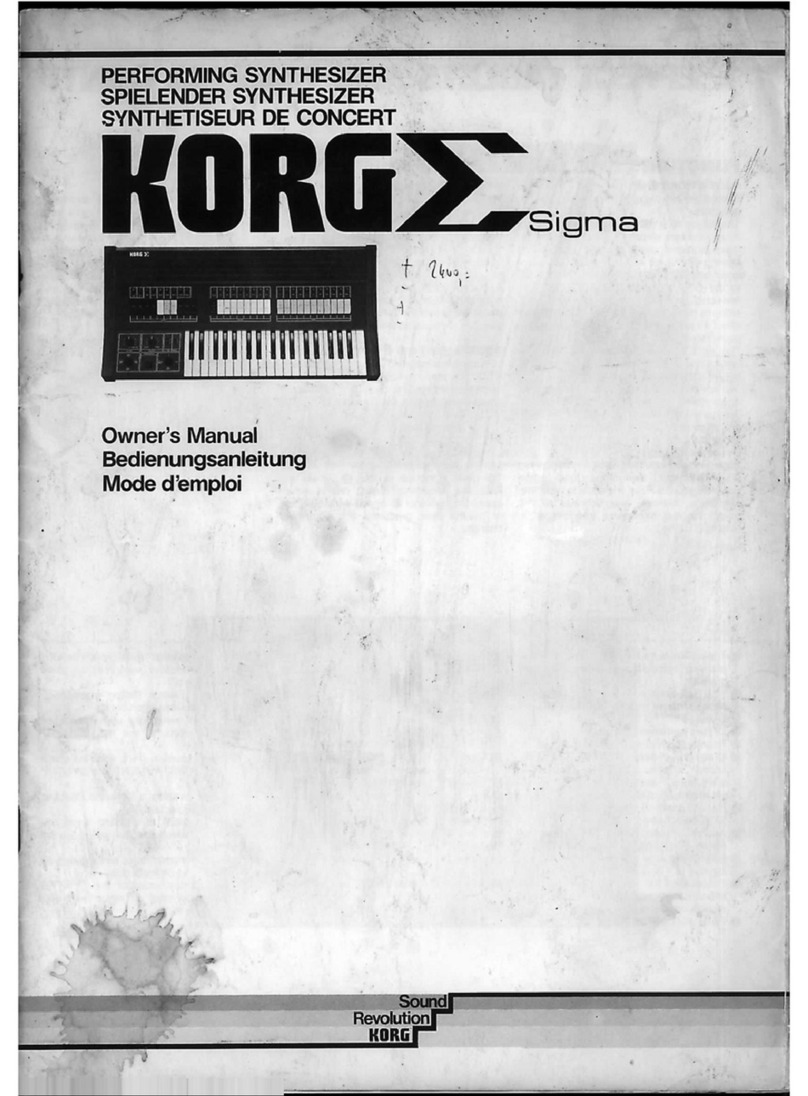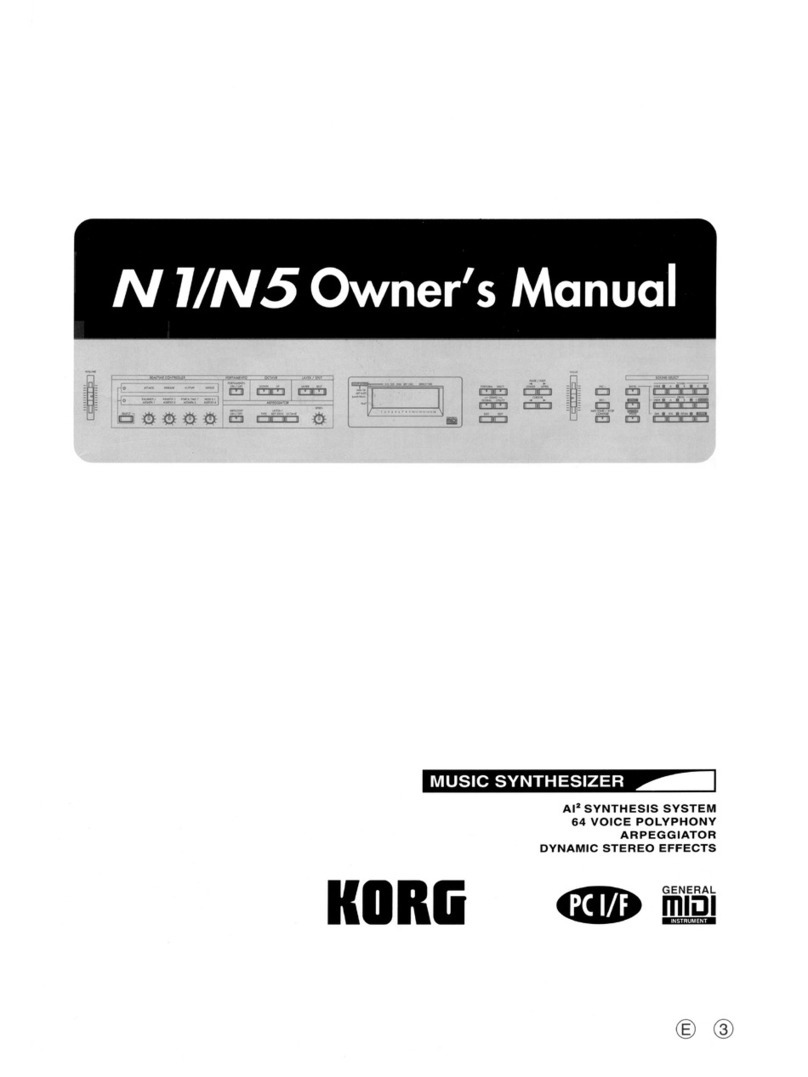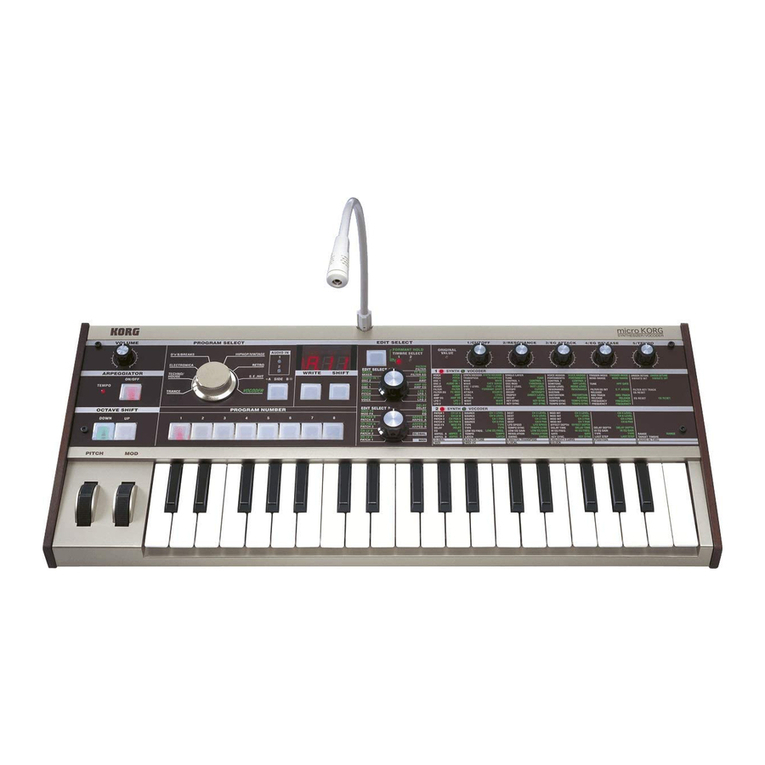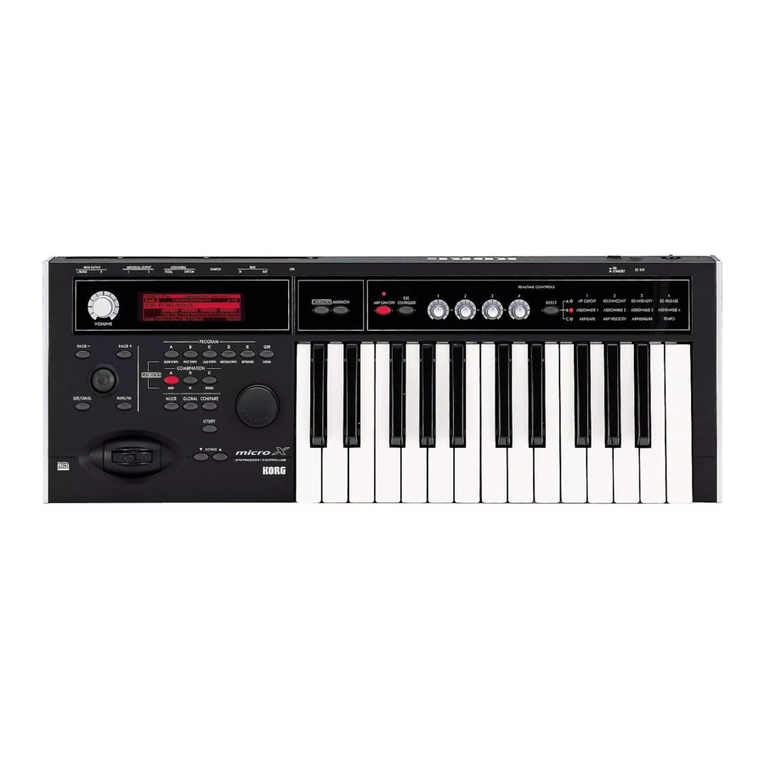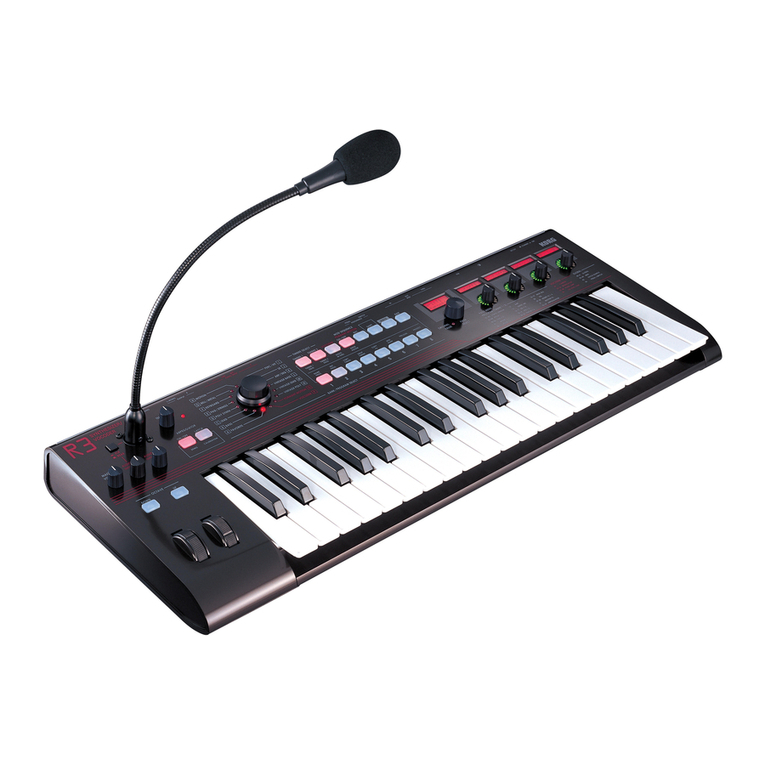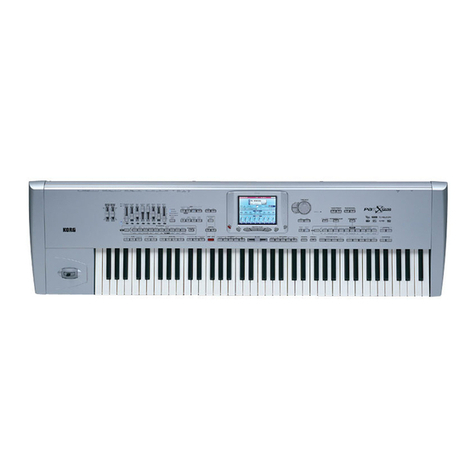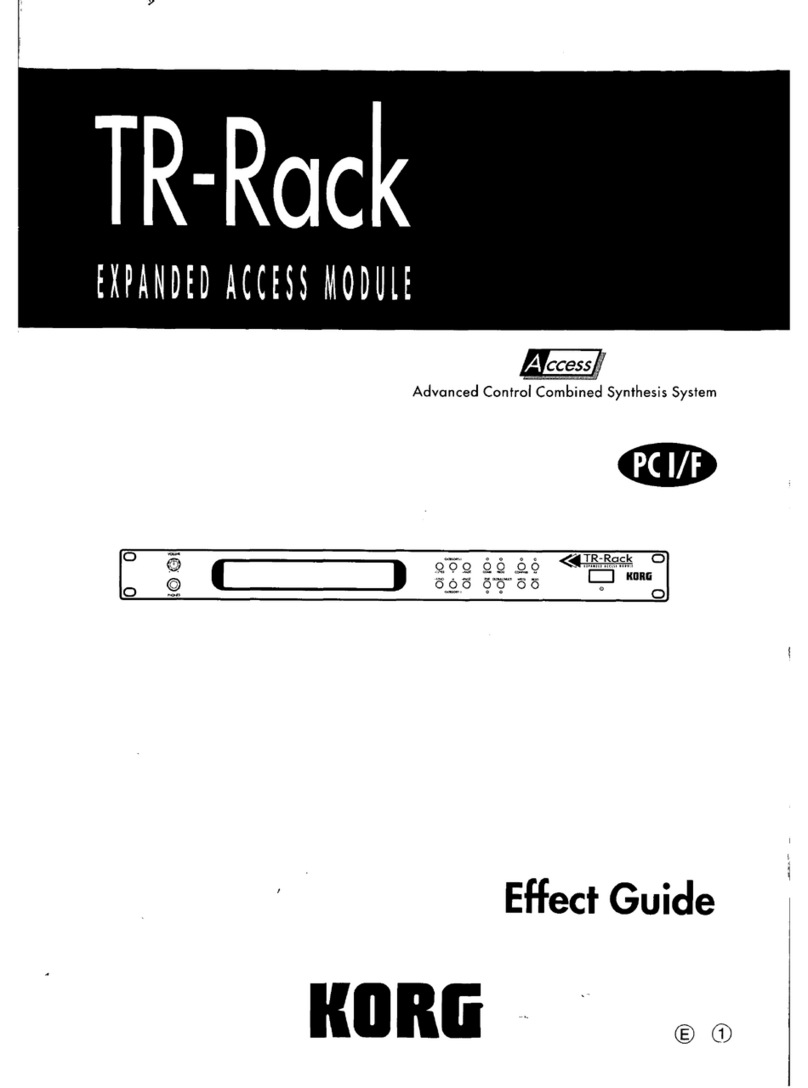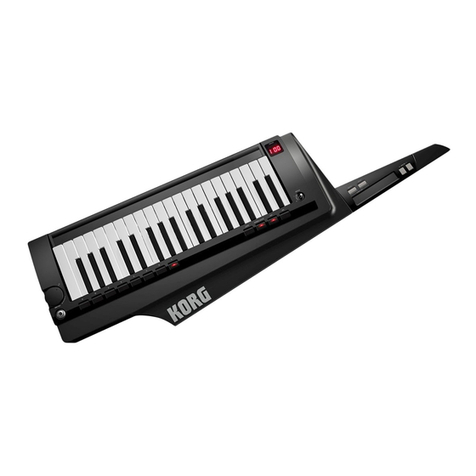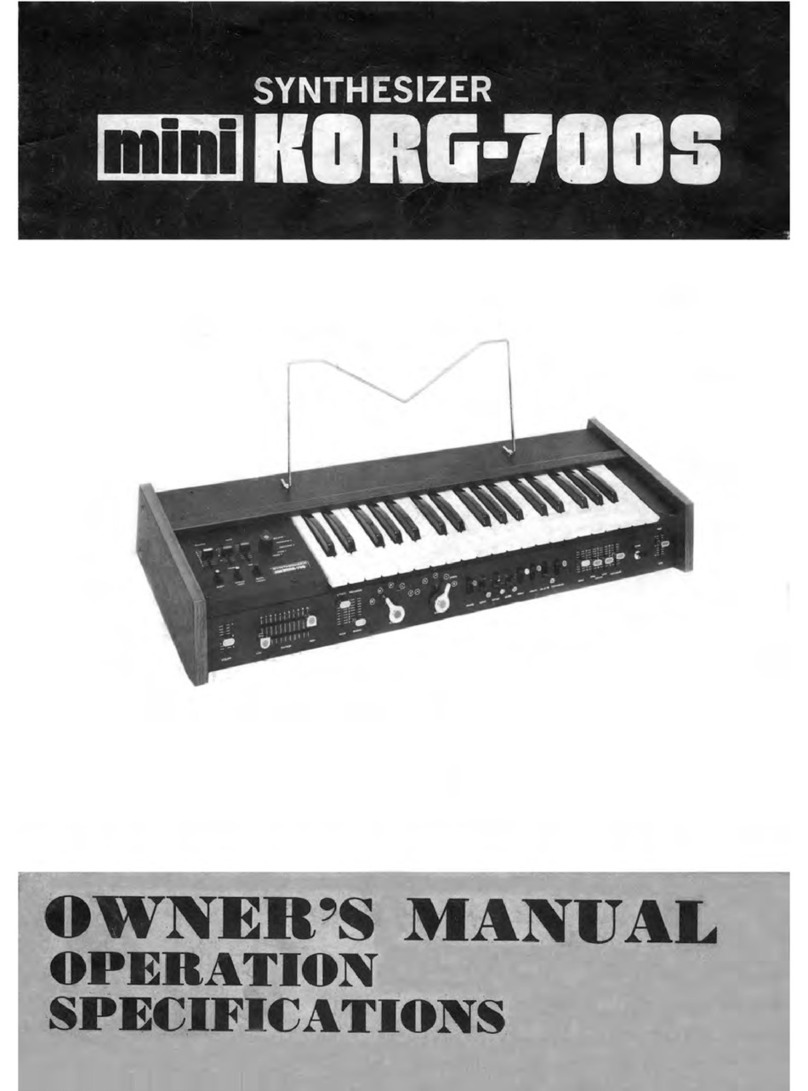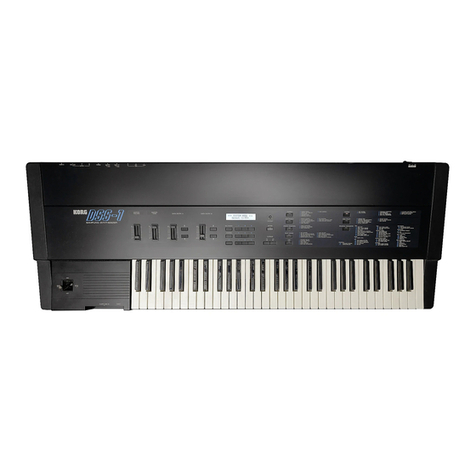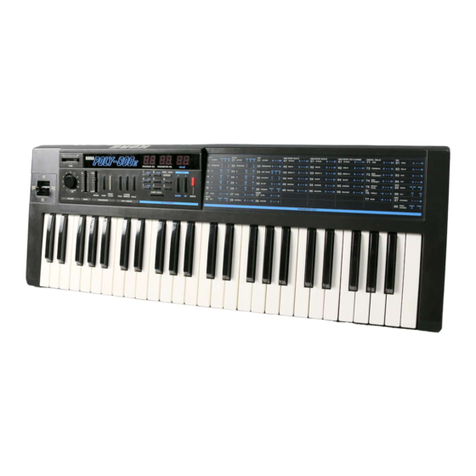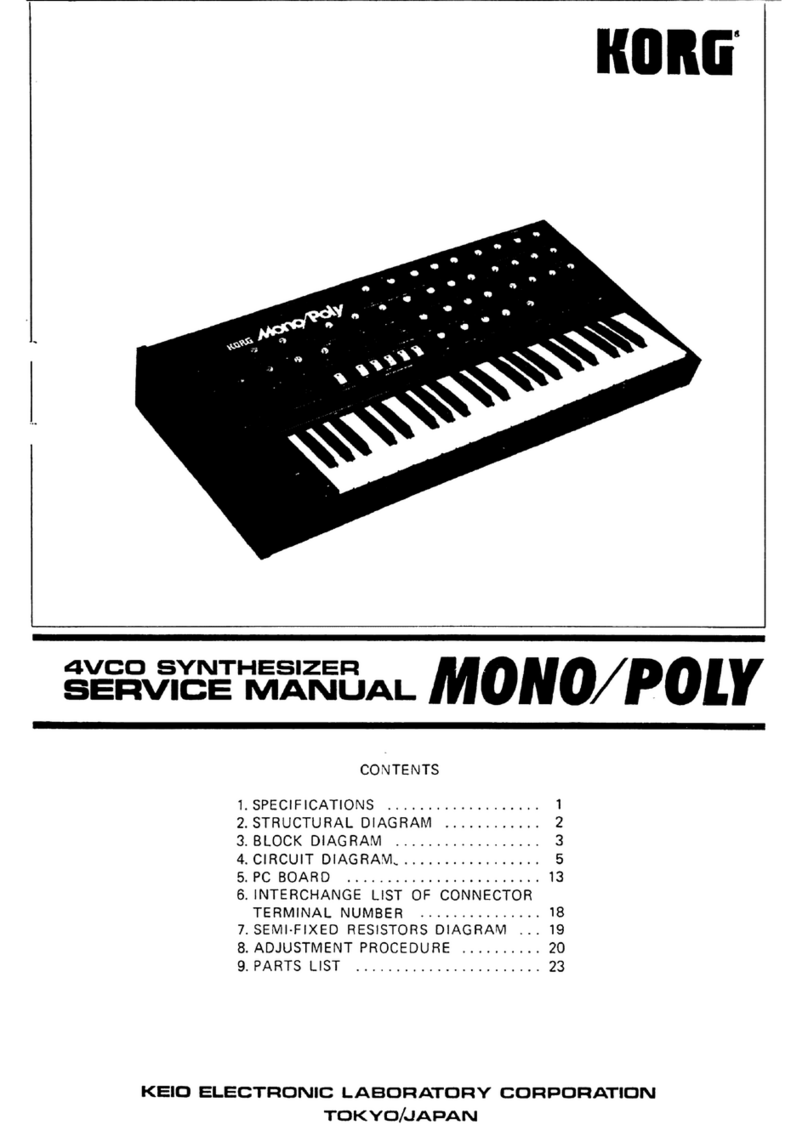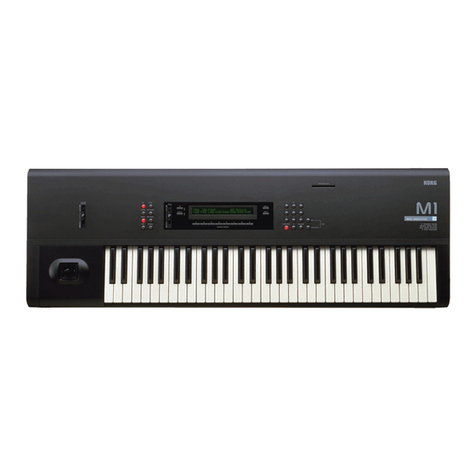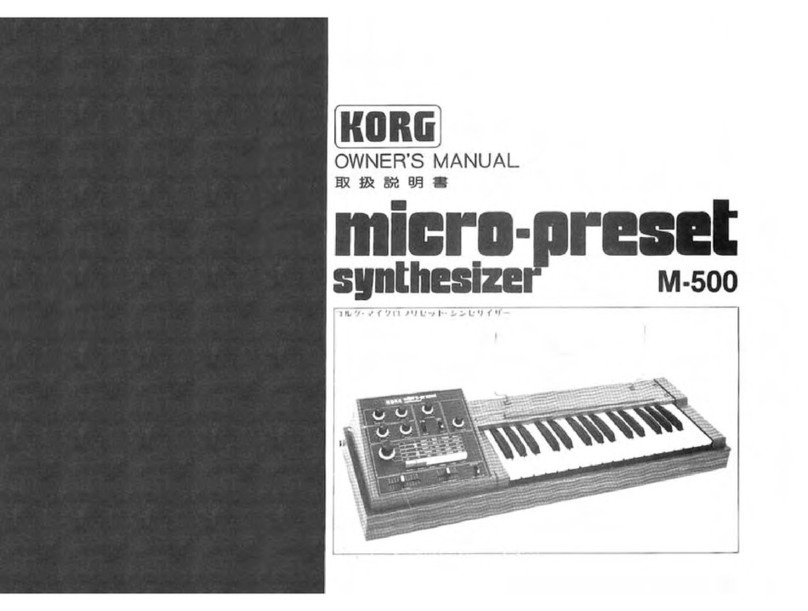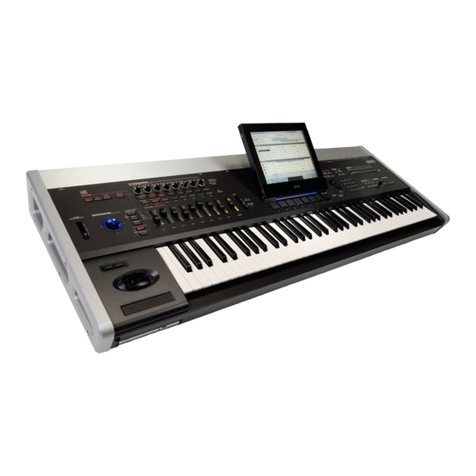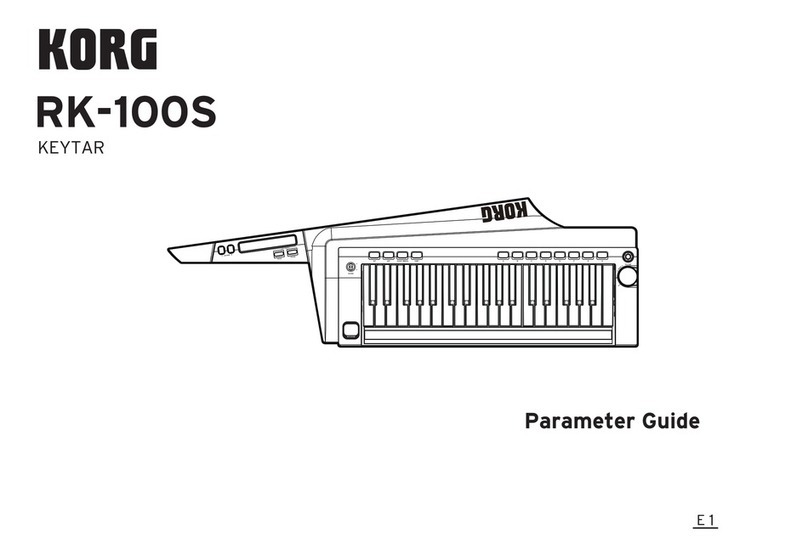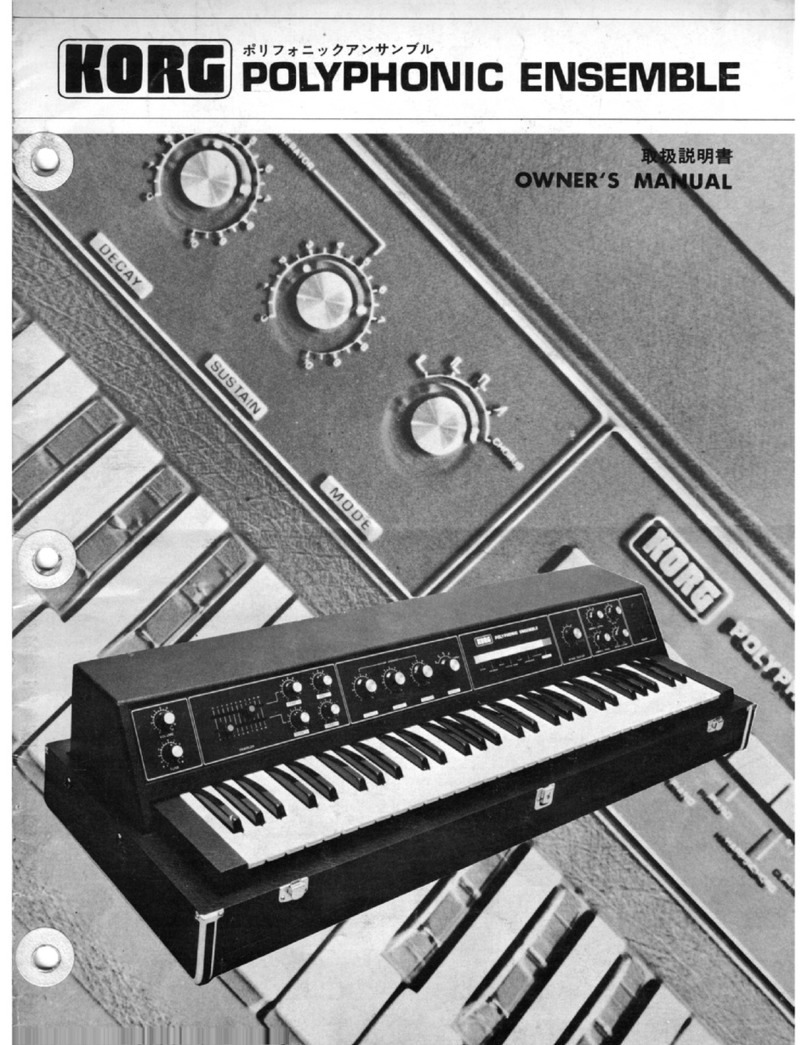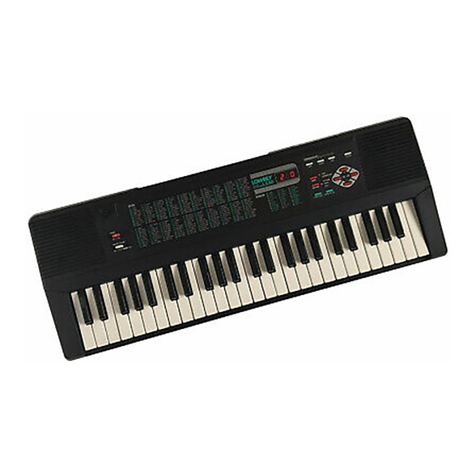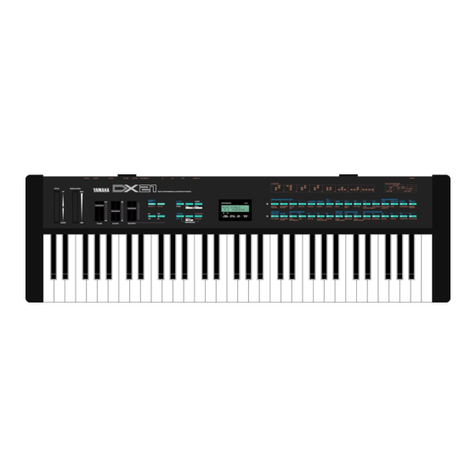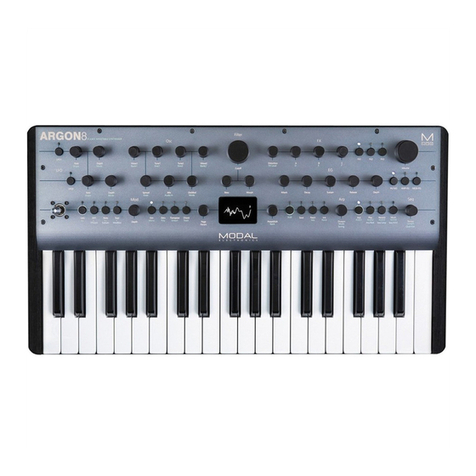
7. ADJUSTMENT PROCEDURE
7-1 Power supply checK
1Positive ripple.
Should be no more than 2mVp-p.
Set oscilloscope vertical gain at 10mV/cm and
check that power supply ripple is 2mV or less.
2. Negative rippie.
Same as positive, should be no more than
2mVp*p.
7*2 Pitch adjustment
1. VCO-1.
Perlorm adjustment with synthesizer controls at
"normal setting" {Scale =0, Waveiorm^ ru ,
Master Tune. Pitch, arid all other knobs at "0").
See figure 1
a. Play C-3 (high C) on the keyboard and ad-
just the high 0semi-fixed screw uniM you obtain
the correct tuning as indicated by WT-10A
(connected to tne SiG OUT jack).
b. Play key C<1 and adjust the tow 0semi,
fixed screw.
c. Repeat steps aand bas many times as
necessary until both are tuned to the correct
pitch.
d. Check the tuning of C*1. C-2. and C-3 on
the WT-lOA meter io make sure pitch deviation
iswilh t2 cents for each.
e. Change the scale to 32', 1S’, $\ and 4' and
check the tuning of all four Ckeys to make sure
that the pitch oeviatlon of each Is within tio cents.
7-3 KBD CV adjustment
Use a4-1/2 digital voltmeter to measure the KBD
CV OUT signal.
a. Measure output voltage first when you play
key C-3, then when you play key C-2. The output
voltage icr c-3 should be exactly half that for
C-3. Adjust the KBD CV high 0semi-fixed
screw as necessary so that C-2 produces half
the voltage of C-3.
b. Measure C-2 and then C- 11n the same way.
Adjust the KBD CV low Oeemi-fixed screw as
necessary so that C-2 produces exactly half the
voltage of C-3
c. Repeat steps a arxf bas many times as
necessary until ouiput vdtage of each of
C- 1,C-2. and C-3 is exactly half ft^al of the next.
©'©
©
©0
MC
0
0
u
0
pH*
•oU
©
0
[>
o
o
mrn
©
©
ATUC«
©
©
VM
©
WT-10A
Digital voltage
meter
C-1 C-2 C-3
\
Ftg. I
s

